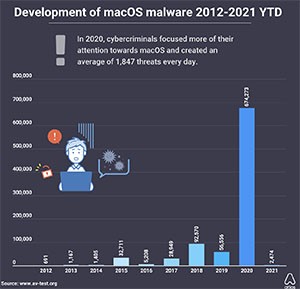

- #MACOS MALWARE YEARS RUNONLY APPLESCRIPTS AVOID FULL#
- #MACOS MALWARE YEARS RUNONLY APPLESCRIPTS AVOID SOFTWARE#
- #MACOS MALWARE YEARS RUNONLY APPLESCRIPTS AVOID CODE#
- #MACOS MALWARE YEARS RUNONLY APPLESCRIPTS AVOID MAC#
However, this very specific malware was notarized, and ran on Mac devices, thus exposing a loophole in the new security feature. This type of malware is very common and usually contains only ‘unnotarized’ codes, and immediately blocked by Apple. This particular adware was present as a Flash Player Installer. Security researcher Patrick Wardle writesthat a campaign distributing ‘Shlayer adware’ was able to bypass Apple’s new adware scanning process and is the first malware to be notarized for MacOS. However, it apparently missed a pretty common malware that has been running for years now. This was hailed as one of the most foolproof security features ever passed. Basically, any app would be assessed by Mac’s in-built security screening software, and only allowed to be run if it passes all the security checks. Last year, the company had incorporated a new process for ‘notarizing’ all of applications that wish to run on Apple devices to avoid adwares and malwares. However, even the most skilled players slip up sometimes, as did Apple by allowing a fairly common malware to run on Mac devices.
#MACOS MALWARE YEARS RUNONLY APPLESCRIPTS AVOID SOFTWARE#
Recent news Datadog posts quarterly revenue growth of 61 percentĭatadog posted revenue of $437 million in its latest quarter, up 61 percent from the same period last year.Apple’s MacOS (or any other software for that matter) is stern when it comes to allowing malware or adware on its platform, and is known for providing better security than any of its competitors. The new European rules restrict the power of the world's larg. The Digital Markets Act has entered into force. Digital Markets Act enters into force, European Union curbs big tech Yet the OT security of data centers in particular is often su. Virtually all incidents start at a data center. OT security of data centers should be a top priority Thales, a major French defence and technology group, announced that criminal group LockBit 3.0 claims to have. French defence giant Thales says it may have been hacked Data processor Alation expands with €120 million in growth capitalĪlation secured a funding round of more than €120 million in growth capital. Perhaps nowhere more prevalently than in cloud computing and data science. . Life, the universe & data… Y42 reimagines DataOps The hope for this team of researchers is that they can crack the mystery around this clever malware. Phil Stokes, a macOS malware researcher at SentinelOne, published the attack’s full-chain with past and present OSAMiner campaigns and IOCs (Indicators of Compromise).
#MACOS MALWARE YEARS RUNONLY APPLESCRIPTS AVOID CODE#
It would then download and run a second run-only AppleScript and then run another third/final one.īecause the run-only AppleScript is received in a compiled state (the source code is not readable by humans), security researchers’ analysis was not easy. When the users installed their pirated software, the disguised installers would download and run a run-only AppleScript. It used nested run-only AppleScript files to retrieve its malicious code across different stages at the time.
#MACOS MALWARE YEARS RUNONLY APPLESCRIPTS AVOID FULL#
The reason was that the researchers were unable to retrieve the malware’s full code. However, the reports written after this were not very detailed and did not capture the full extent of OSAMiner’s capabilities.

Back in 2018 August and September, two Chinese security firms analyzed an older version of the Malware. However, the crypto miner did not completely avoid detection. Not too invisibleįrom the data collected, it seems that it attacked people in Chinese and Asian Pacific communities mostly. OSAMiner has been active for a while and has evolved in recent times, according to a SentinelOne spokesperson. According to SentinelOne, a security firm, which published a report this week. It is disguised in pirated (cracked) games and software like League of Legends and Microsoft Office for Mac. The malware has been distributed in the wild since at least 2015 and has been named OSAMiner. In the last five years (perhaps more), macOS users have been targeted by a sneaky malware operation, which used a clever trick, making it virtually invisible, while hijacking hardware resources on infected machines to mine cryptocurrency.


 0 kommentar(er)
0 kommentar(er)
